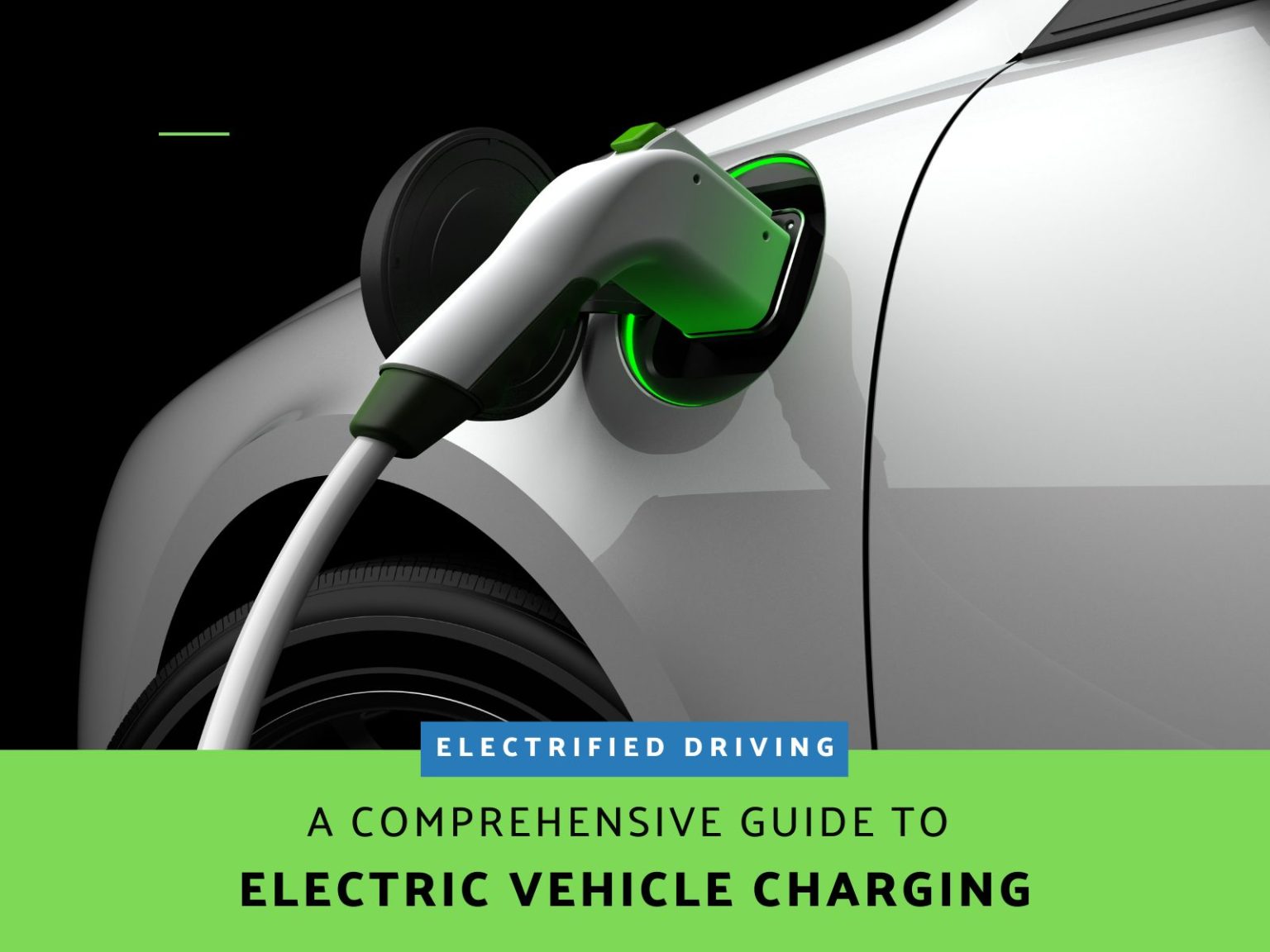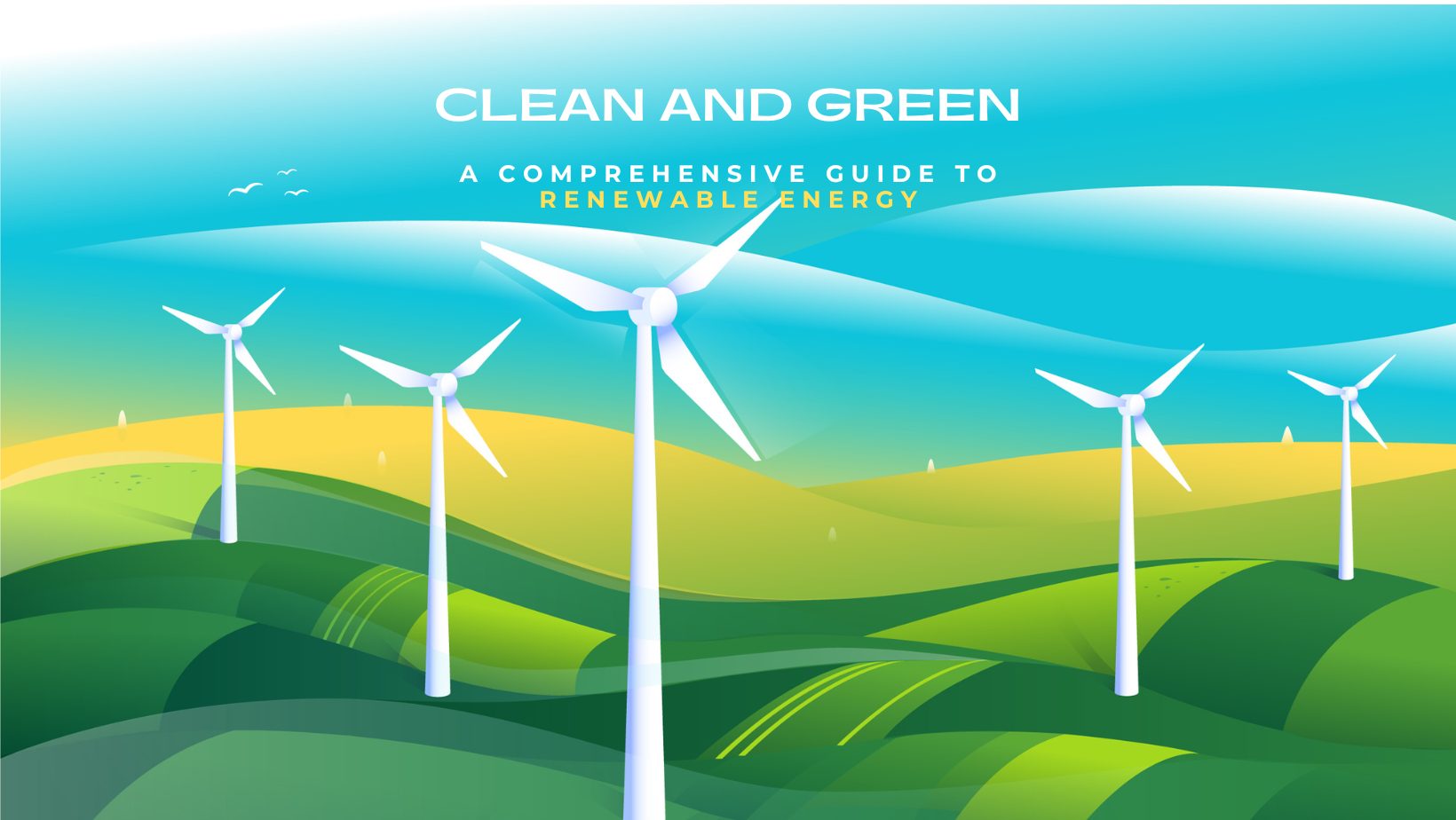Electrified Driving: A Comprehensive Guide to Electric Vehicle Charging
EV Charging Guide - Table of Contents
Introduction to EV charging
Electric vehicles (EVs) are becoming increasingly popular as an eco-friendly mode of transportation. One key aspect of owning an EV is understanding how to charge it. There are different types of EV charging methods, each with its advantages and disadvantages. In this guide, we’ll take a detailed look at EV charging, how you can maximize it benefits, or make a more informed decision about buying an EV.
First, it’s important to understand that there are a few key ways of charging an EV, each with their advantages and drawbacks.
Types of EV Charging
Level 1 Charging: This is the most basic form of EV charging, also known as “trickle charging.” It uses a standard household outlet (120 volts) and is the slowest method of charging, typically providing around 4-5 miles of range per hour. Level 1 charging is suitable for overnight charging at home or for emergency situations when no other charging options are available.
Level 2 Charging
This is the most common method of EV charging and requires a dedicated EV charging station that uses a 240-volt power source, and requires professional installation. Level 2 charging is faster than Level 1 charging, typically providing around 25-30 miles of range per hour. It is ideal for charging at home, at work (if your workplace offers EV charging), and at public charging stations.
Level 3 Charging (DC Fast Charging)
This is the fastest method of EV charging and is commonly found at public charging stations along highways or major routes. DC fast chargers use direct current (DC) and can charge an EV from 0 to 80% in about 30 minutes, providing up to 150-350 miles of range, depending on the charger’s power output, the amount of input and EV is designed to accept, and the EV’s battery capacity.
While some EVs may be able to accept up to 350 kWh fast charging, many are limited to much lower power inputs, often between 100 kWh and 150 kWh.
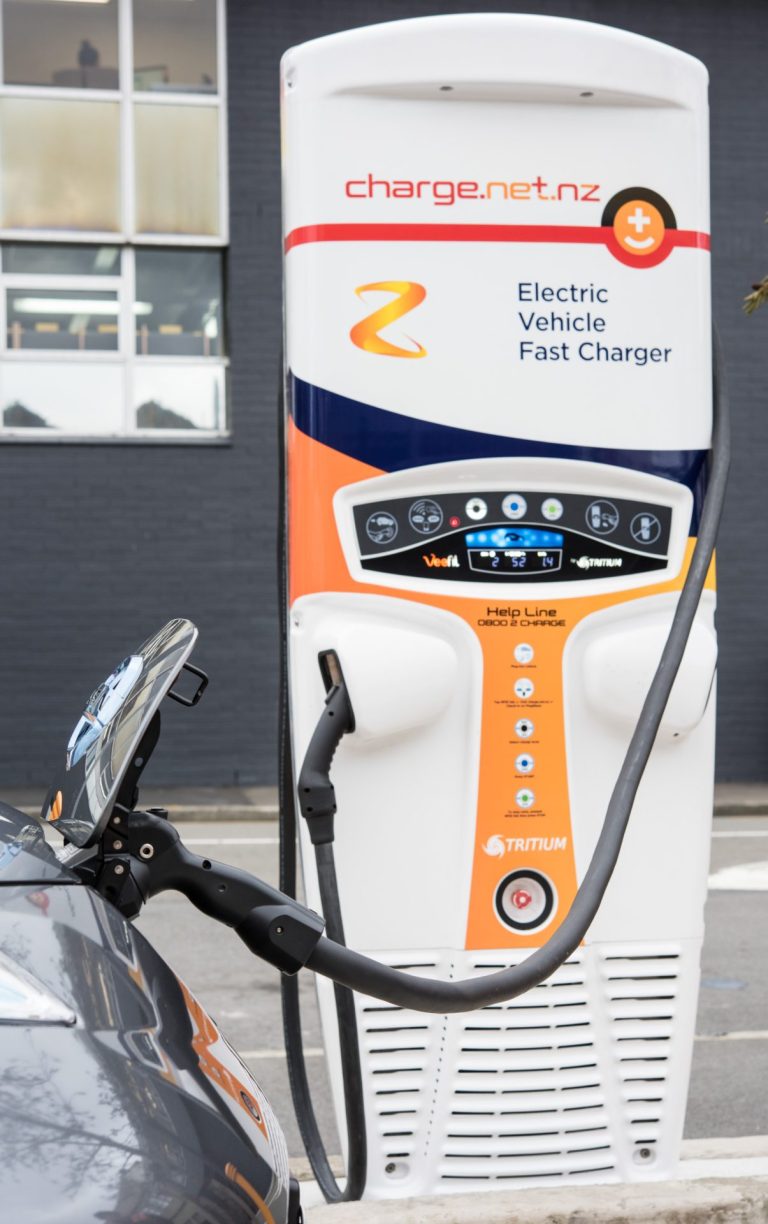

Home Chargers
These are Level 1 or Level 2 chargers installed at a residential location. Home chargers offer convenience as you can charge your EV overnight or during off-peak hours, saving money on electricity costs. They also provide a reliable source of charging, especially for those who do not have access to public chargers nearby.
What are my options for charging my EV at my home?
For more about charging your EV at your home, see our comprehensive guide to choosing the right EV charger for your home.
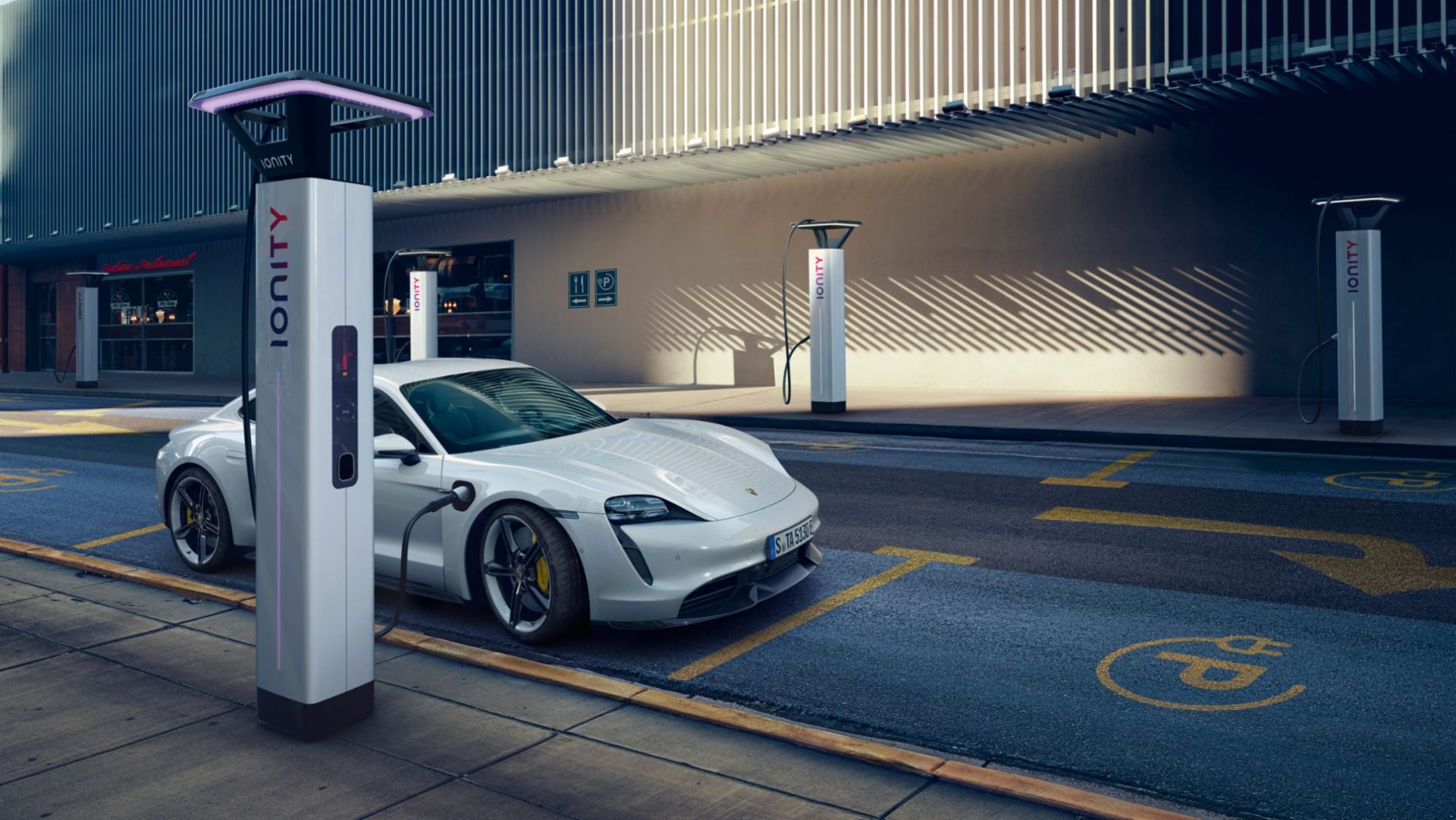
Public Chargers
These are Level 2 or Level 3 chargers available at commercial locations, such as shopping centers, parking garages, and highways. Public chargers offer flexibility for EV owners who do not have access to home chargers or need to charge on-the-go. However, the charging speed and availability of public chargers may vary depending on the location and charging network.

What type of connector is used for charging an EV?
When it comes to EV charging, there are several different connector types used globally. These connector types determine the compatibility and charging capabilities of an EV charger. Here are some of the most popular EV charging connector types:
Type 1 (SAE J1772)
This connector type is commonly used in North America and Japan. It has a 5-pin design and is typically used for Level 1 and Level 2 charging at home or public charging stations.
Type 2 (IEC 62196-2 or Mennekes)
This connector type is widely used in Europe and is also becoming popular in other regions. It has a 7-pin design and is used for both Level 2 and Level 3 (DC fast charging) charging, making it versatile for different charging speeds.
CHAdeMO
This connector type is primarily used for Level 3 (DC fast charging) charging and is commonly found in Japanese and Korean EVs. It has a unique design with a round shape and is known for its fast charging capabilities.
CCS (Combined Charging System)
This connector type is a universal standard that combines both AC (Type 1 or Type 2) and DC (CHAdeMO) charging capabilities in a single connector. It is becoming increasingly popular in Europe and North America for Level 3 (DC fast charging) charging.
North American Charging Standard (NACS / Tesla)
This connector type is exclusive to Tesla vehicles and is used for Tesla’s proprietary Supercharger network, which provides Level 2 and high-speed Level 3 (DC fast charging) charging for Tesla EVs.
What is the most popular EV charging connector type?
In terms of popularity, Type 2 (IEC 62196-2 or Mennekes) and CCS (Combined Charging System) connectors are becoming widely adopted globally due to their compatibility with different charging speeds and ability to handle both AC and DC charging. However, it’s important to note that the popularity of connector types may vary depending on the region, charging infrastructure, and EV models available in a particular area. It’s always recommended to check the compatible connector types for your specific EV model and the availability of charging stations in your area to ensure seamless charging experience.
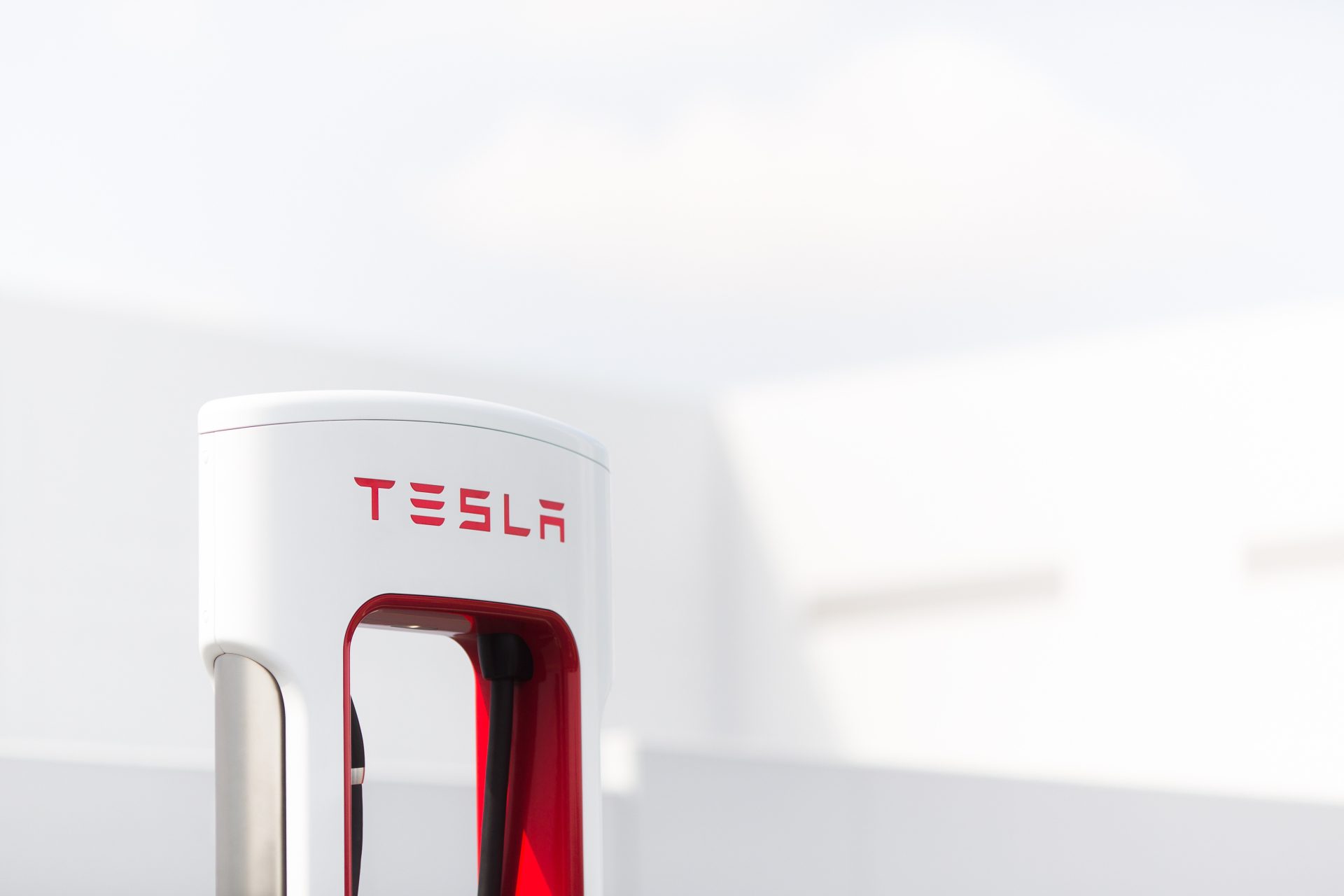

Advantages of EV Chargers
Environmentally-friendly
EVs produce zero tailpipe emissions, reducing air pollution and greenhouse gas emissions, which contribute to climate change.
Cost-effective
EVs have lower operating costs compared to traditional internal combustion engine vehicles. Charging at home can be cheaper than refueling with gasoline, and maintenance costs are typically lower as EVs have fewer moving parts.
Convenience
Home chargers offer the convenience of charging your EV overnight, avoiding the need to visit a public charging station. Public chargers provide flexibility for charging on-the-go during longer trips.
Potential for Off-peak Charging
Many utility companies offer lower electricity rates during off-peak hours, allowing EV owners to take advantage of cost savings by charging their vehicles during these times. Some home EV chargers allow EV owners to set schedules when electricity rates are cheapest.
Disadvantages of EV Chargers
Charging Time
Charging an EV can take longer compared to refueling with gasoline. Level 1 charging is the slowest, and even Level 2 charging may take several hours to fully charge an empty battery, depending on the EV’s battery capacity and the charging station’s power output.
Public Charger Availability
Public chargers may not be as readily available as gasoline stations, especially in certain areas or during peak times. Depending on the location and charging network, public chargers may also be occupied or out of service, causing inconvenience to EV owners.
Upfront Cost
Installing a dedicated Level 2 home charger can require an upfront cost for the charger and installation, which may vary depending on the brand, features, and complexity of the installation. However, it’s important to note that the long-term cost savings from reduced fuel and maintenance costs of an EV can offset this initial investment.
Range Anxiety
Range anxiety refers to the fear of running out of battery power before reaching a charging station. While EVs are improving in terms of range, the limited availability, and sometime reliability, of fast-charging stations in some areas can cause concerns about long-distance travel for some EV owners.
Major Considerations for EV Charging
Charging Speed
Consider the charging speed of the charging station and the EV’s battery capacity. Level 1 charging is suitable for overnight charging, while Level 2 charging provides faster charging for everyday use. Level 3 charging (DC fast charging) is ideal for longer trips and quick top-ups.
Location
Consider the availability of charging stations at your home, workplace, and along your regular routes. Home chargers provide convenience, while public chargers are essential for longer trips or when home charging is not feasible.
Charging Network
Check the availability and compatibility of charging stations with your EV. Some charging stations may require a membership or a specific charging network account, so research the options available in your area.
Cost
Consider the upfront cost of purchasing and installing a charging station, as well as the ongoing electricity cost for charging. Compare the cost of different charging options and choose the one that fits your budget.
Charging Time
Understand the charging time for different charging levels and plan your charging accordingly. Level 1 charging is slow, Level 2 charging is moderate, and Level 3 charging is fast but may not be available everywhere.
Battery Health
Consider best practices for charging to maintain your EV’s battery health. Avoid frequent fast charging and charging to 100% capacity regularly, as it may impact the battery’s longevity.
Backup Plan
Have a backup plan in case a charging station is unavailable or out of service. Plan alternative routes or have contingency plans in case of unexpected situations.
Is EV charging free?
Home charging
Public charging stations
Public EV charging stations may charge a fee for the electricity used to charge your EV. Some charging stations offer free charging, while others require payment, either through a pay-per-use model or a subscription-based model. The cost of public charging can vary widely depending on the charging station, location, and charging speed (Level 2 or DC fast charging).
Workplace charging
Some employers offer workplace charging for their employees as an employee benefit. In such cases, the charging may be provided for free or at a discounted rate, as determined by the employer’s policies.
EV charging networks
There are several EV charging networks that offer membership-based plans or pay-per-use options for charging at their affiliated charging stations. These networks may have their pricing structures and may or may not offer free charging options.
It’s important to note that while some EV charging may be free, there may still be associated costs, such as installation and maintenance of home charging equipment, subscription fees for charging network memberships, or parking fees at certain public charging stations. It’s always best to check the charging fees and policies of the specific charging station or network you plan to use to determine if there will be any costs associated with your EV charging.

How much does it cost to charge an EV?
Electricity rates
Type of charger
Battery capacity of the EV
Charging at home vs. public charging stations
Time-of-day
Some charging stations may have time-of-use rates, where the cost of charging can vary depending on the time of day or day of the week. Charging during off-peak hours may be more cost-effective compared to peak hours when electricity rates are higher.
It’s important to note that while EVs generally have lower fueling costs compared to gasoline-powered vehicles, the cost of charging an EV can vary significantly depending on the factors mentioned above. It’s recommended to research and understand the local electricity rates, charging options, and associated costs to estimate the cost of charging your specific EV accurately.
Additionally, some EVs may come with features like built-in charging cost estimators or mobile apps that can help you monitor and manage your charging costs.
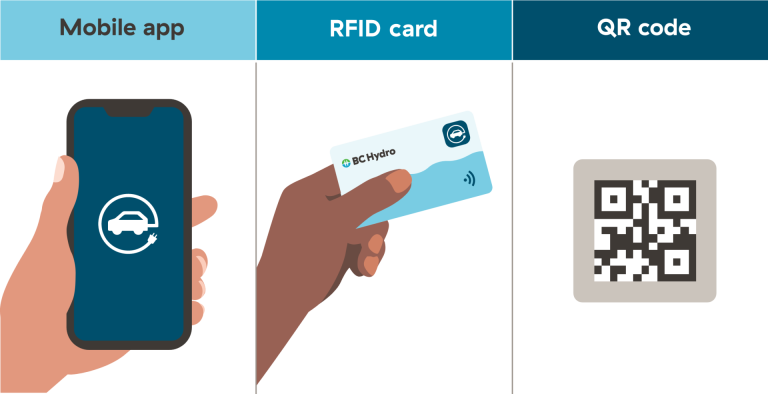
How do I pay for EV charging?
Charging station payment systems
Many public charging stations have their own payment systems that allow you to pay for charging using various methods, such as credit or debit cards, mobile payment apps, or RFID cards. These payment systems may require you to create an account with the charging station provider or have a membership to use their services.
Charging station networks or aggregators
Some charging stations are part of networks or aggregators that offer access to multiple charging stations under a single payment system. These networks may have their own payment apps or membership plans that allow you to pay for charging at various stations within their network.
Charging station apps
There are several apps available that allow you to locate and pay for EV charging stations. These apps often require you to create an account, add payment information, and then use the app to initiate and pay for charging sessions at compatible charging stations.
EV charging subscription plans
Some charging station providers or networks offer subscription plans that allow you to pay a monthly or annual fee in exchange for discounted or unlimited charging sessions at their charging stations. These plans may be beneficial if you use EV charging stations frequently and want to simplify payment.
Charging station cards or tags
Some charging station providers or networks issue cards or tags that you can use to initiate charging sessions and pay for the electricity used. These cards or tags may need to be linked to your payment information and account before use.
It’s important to note that payment methods for EV charging may vary depending on the location, charging station provider, or network. It’s recommended to check with the specific charging station provider or network to understand their payment options and fees, and to have the necessary payment methods or accounts set up before using their services.
Is EV charging safe?
Yes, electric vehicle (EV) charging is generally safe when following proper guidelines and using equipment that meets safety standards. However, as with any electrical process, there are some safety considerations to keep in mind:
Use certified charging equipment
It is important to use certified charging equipment that meets safety standards, such as UL, CE, or ETL certifications, and follow the manufacturer’s instructions for safe use.
Follow proper installation guidelines
If you are installing EV charging equipment at home, it’s crucial to follow proper installation guidelines, including using a qualified electrician for installation. Faulty installations can pose safety hazards, such as electrical shocks or fires.
Avoid using damaged charging cables
Inspect your charging cables regularly for any signs of damage, such as frayed wires or exposed conductors. Using damaged charging cables can pose safety risks and should be replaced promptly.
Be cautious of charging in extreme conditions
Charging in extreme weather conditions, such as during thunderstorms or flooding, can pose safety risks. Avoid charging your EV during extreme weather conditions and follow safety guidelines provided by the charging equipment manufacturer.
Do not tamper with charging equipment
Tampering with EV charging equipment or using unauthorized modifications can be dangerous and may void warranties. Always use charging equipment as intended by the manufacturer and avoid any modifications or alterations.
Be aware of EV charging etiquette
When using public charging stations, be mindful of other users and follow charging etiquette, such as not blocking charging spots after your vehicle has finished charging. This helps ensure safety and accessibility for all users.
Educate yourself about EV charging safety
Stay informed about EV charging safety guidelines, updates, and recalls from reputable sources, such as the charging equipment manufacturer, EV manufacturer, or relevant government agencies.
By following these safety considerations and using certified charging equipment as intended, EV charging can be safe for both home and public charging. However, it’s always important to exercise caution and follow best practices to ensure safe and efficient charging for your electric vehicle.
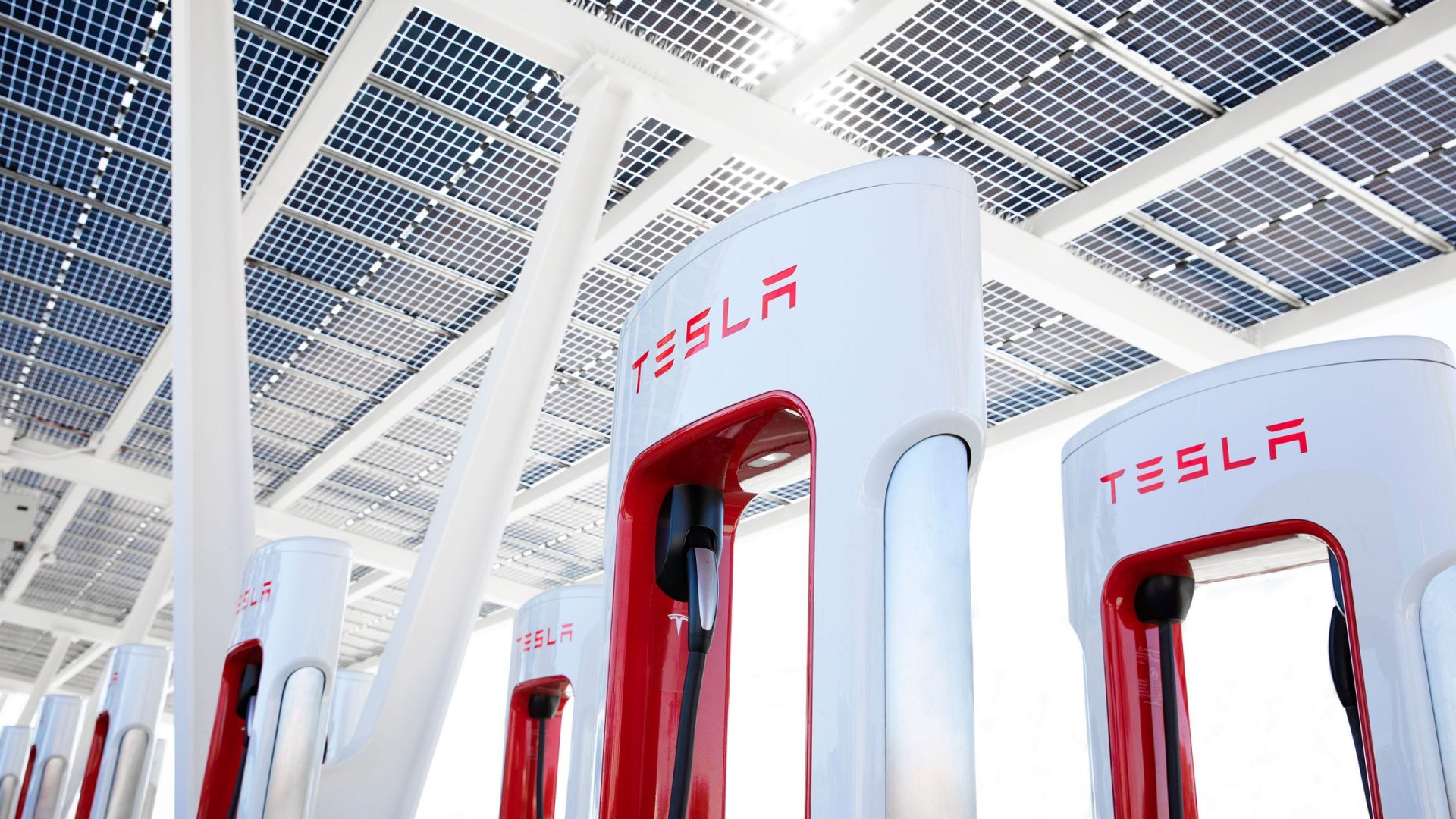
Tesla Supercharger
Electrify America
ChargePoint
EVgo
Ionity
Enel X
BP Pulse
Shell Recharge
EVBox
It’s important to note that the landscape of EV charging service providers is constantly evolving, and there may be other regional or local providers not listed here. It’s recommended to research and identify the most relevant and reliable EV charging service providers in your area based on your specific charging needs and location.
Do I need to own a Tesla in order to use Tesla Supercharger?
As of November 2021, Tesla began running its Non-Tesla Supercharger Pilot program program across Europe. The program began in the U.S. in March 2023. By the end of 2024, Tesla plans to make 7,500 Supercharger stations available to non-Tesla EVs.
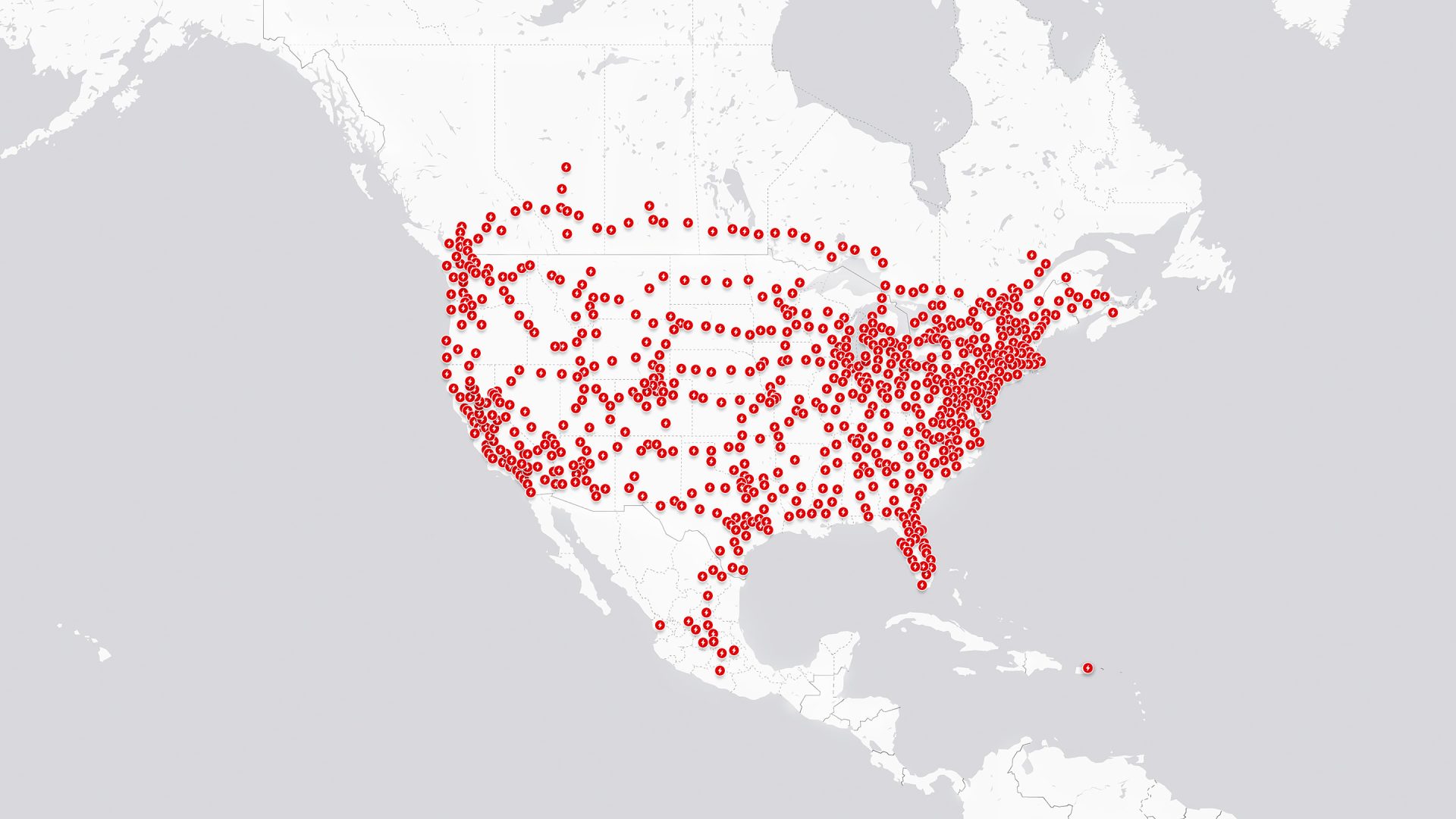
Where can I find an EV charging station near me?
There are various ways to find electric vehicle (EV) charging stations in the US, Canada, and Europe. Here are some popular methods:
Charging Networks’ Websites / Smartphone Apps
Many EV charging networks, such as ChargePoint, EVgo, Electrify America, and Tesla Supercharger, have their own websites and apps that provide maps and information about their charging stations’ locations, availability, and charging rates. These networks often have a large number of charging stations in the US, Canada, and Europe, and their websites/apps are reliable sources to find charging stations.
EV Charging Maps
Several websites and apps offer comprehensive maps of EV charging stations across the US, Canada, and Europe. Examples include PlugShare, ChargeHub, and OpenChargeMap, which provide user-generated data on charging station locations, types, availability, and reviews. These maps are often community-driven, and users can contribute by adding new charging stations or updating information.
GPS Navigation Systems
Many GPS navigation systems in modern EVs and smartphone apps, such as Google Maps, Apple Maps, and Waze, now include EV charging station locations as part of their mapping services. These systems can help you locate nearby charging stations and provide directions to them.
Automaker Websites / Apps
Some automakers, such as Tesla, Ford, and Audi, have their own websites and apps that provide information on their branded charging networks or recommended charging stations for their EV models. These websites/apps often include maps and detailed information about the charging stations’ locations, compatibility, and charging rates.
Charging Station Aggregators
There are also aggregator websites and apps that compile charging station information from multiple networks into a single platform, making it easier to find charging stations across different networks. Examples include EVChargingHub, PlugSurfing, and ChargeMap, which provide access to various charging networks and their charging stations.
Public Utilities and Government Websites
Some public utilities and government websites in the US, Canada, and Europe also provide information about EV charging stations in their respective regions. These websites may offer maps, directories, or databases of publicly available charging stations, especially those installed by the government or utility companies.
It’s recommended to use multiple sources and cross-verify information to ensure the accuracy and availability of charging stations, as the EV charging infrastructure is continuously evolving and expanding. It’s also important to check for any fees, charging rates, and compatibility with your specific EV model before using a charging station.
The U.S. Department of Energy Alternative Fuels Data has a comprehensive map of public EV charging stations across the U.S. and Canada.

Does weather affect EV charging?
Cold temperatures
EV batteries are less efficient in cold weather, as low temperatures can reduce battery capacity and increase internal resistance. This can result in decreased range and slower charging times, as the battery may require more energy to heat up for optimal performance. Some EVs have built-in battery heating systems to mitigate this issue, but it can still impact charging speeds.
Hot temperatures
High temperatures can also affect EV charging, although to a lesser extent compared to cold temperatures. In hot weather, the battery may heat up faster during charging, which can cause it to reach its maximum temperature limit and result in reduced charging speeds or even temporary charging restrictions to protect the battery.
Heavy rain / snow
Extreme weather conditions like heavy rain or snow can affect the accessibility and safety of charging stations. Charging stations located outdoors may be inaccessible or inconvenient to use during heavy rain or snowfall, which can affect the availability of charging options.
Lightning and power outages
Thunderstorms and lightning can cause power outages, which can interrupt or delay EV charging sessions. In such cases, it’s important to have alternative charging options or plan for potential delays due to weather-related power outages.
Severe weather events
Strong winds during severe weather events like hurricanes or tornadoes can cause damage to charging infrastructure, such as charging stations or power lines, which can disrupt EV charging availability in affected areas.
It’s important to consider the potential impact of weather on EV charging and plan accordingly, especially during extreme weather conditions. Checking weather forecasts, using charging station locator apps or websites to confirm charging station availability, and having contingency plans for alternative charging options can help mitigate the effects of weather on EV charging.
Additionally, some EVs have features like pre-conditioning, where you can remotely warm up or cool down the cabin and battery before charging, to optimize charging performance in extreme weather conditions.
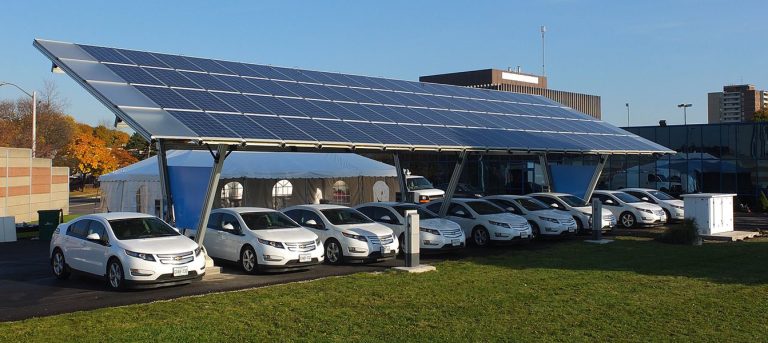
Can an EV be charged with solar?
Solar EV charging offers several benefits, including:
Renewable and clean energy
Solar energy is a clean and renewable source of energy, meaning it does not produce harmful greenhouse gas emissions during generation. Charging an EV with solar energy can reduce carbon emissions and help to mitigate climate change.
Cost savings
Solar EV charging can help to lower the overall cost of charging an EV, as electricity from solar panels is often cheaper than electricity from the grid. Over time, the savings from using solar energy to charge an EV can add up, resulting in reduced charging costs.
Energy independence
Off-grid solar PV systems with EV charging can provide energy independence in remote locations or areas with limited grid access, where relying solely on the grid may not be feasible or cost-effective. Solar energy can offer a reliable and sustainable source of power for charging the EV.
Environmental sustainability
Solar EV charging can contribute to environmental sustainability by reducing reliance on fossil fuels and promoting the use of renewable energy sources. It can help individuals and communities reduce their carbon footprint and contribute to a cleaner and greener future.
It’s important to note that the feasibility of solar EV charging depends on various factors, including the availability of sunlight, the size and efficiency of the solar PV system, the capacity of the EV battery, and local regulations and incentives. Consulting with a qualified solar energy professional or EV charging installer can help determine the suitability and viability of solar EV charging for your specific situation.
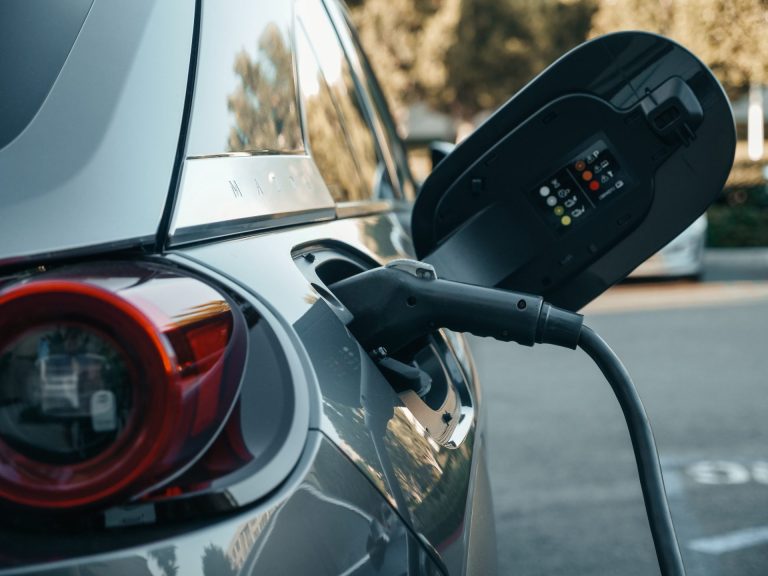
Understanding EV charging is essential for EV owners or those considering purchasing an EV. There are different types of chargers, each with its advantages and disadvantages.
Considering factors such as charging speed, location, charging network, cost, charging time, battery health, and backup plans can help you make informed decisions about EV charging. With the growing availability of charging infrastructure and advancements in EV technology, EV charging is becoming more convenient and accessible, making electric transportation a viable and sustainable option for many people.
Subscribe to Our Weekly Newsletter
Enter your email to get the best of Clean Earth Energy straight to your inbox.

